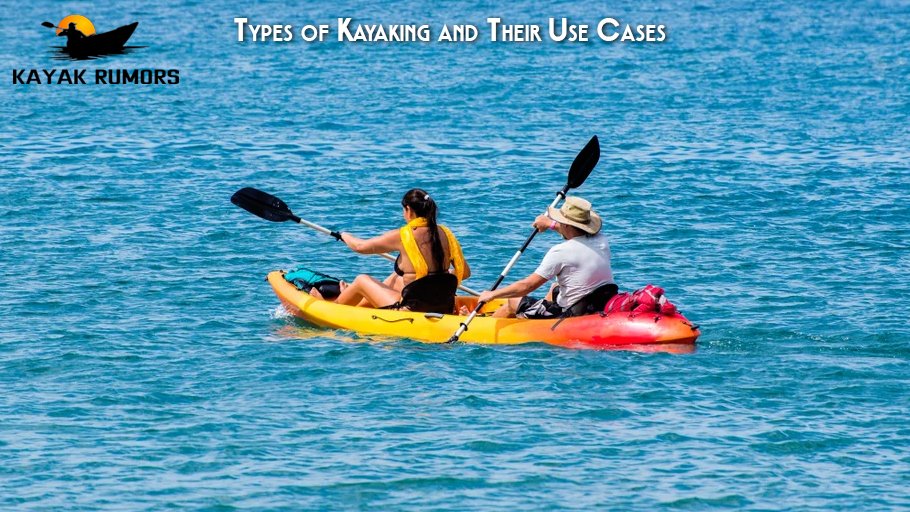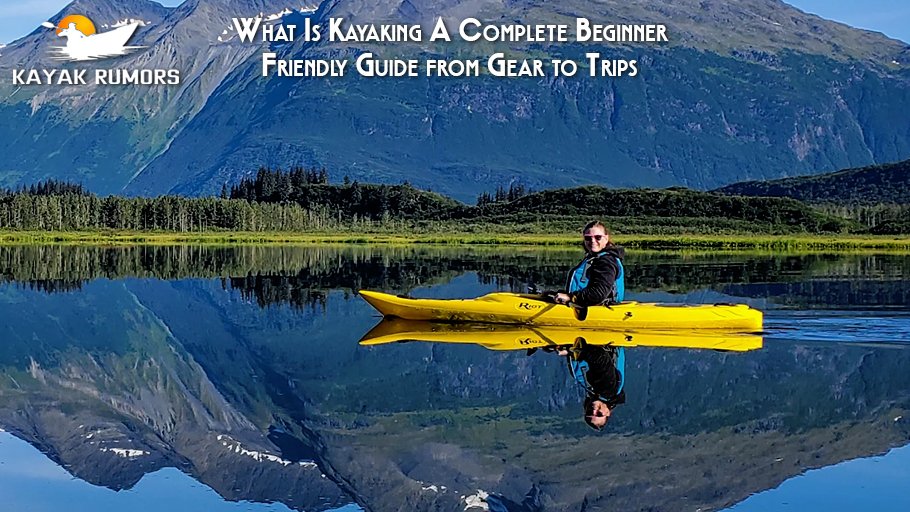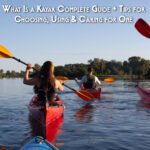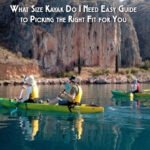What Is Kayaking? Kayaking is paddling a small, narrow watercraft called a kayak through rivers, lakes, seas or oceans, using a double‑bladed paddle. It’s more than just moving through water—it can be relaxing, thrilling, peaceful or adventurous, depending on the setting and skill. People kayak for fun, fitness, fishing, travel and discovering nature.
This guide covers everything you need to know about what is kayaking: the basics, techniques, gear, where to go, how to prepare, safety tips, advanced info and all the little things that many guides leave out. I’ll share stories, advice from real paddlers, expert tips, and comparisons so you can understand kayaking clearly and decide if, when, and how to try it.
1. The Basics of Kayaking
1.1 A Short History
- Kayaking has roots in Arctic regions where Inuit, Yup’ik, and Aleut people designed kayaks to hunt and travel in icy waters. Their kayaks were traditionally built of driftwood and animal skins.
- Over time, kayak designs changed. Europeans adapted the idea for recreation. Modern materials like plastic and composite allow lighter, more durable kayaks.
- Knowing history helps appreciate designs (shape, cockpit, stability) and purpose (type of water, use, durability).
1.2 Definition and Types
- Definition: Kayaking means using a kayak and paddle to move across water. The person sits or kneels in the kayak and uses strokes with the paddle to go forward, back, turn, etc.
- Types of Kayaking:
- Recreational kayaking: For casual fun in calm water (lakes, gentle rivers).
- Touring / Sea kayaking: Long distance, open water, sometimes overnight.
- Whitewater kayaking: Rapids, fast water, navigating obstacles.
- Kayak fishing: Fishing from kayak, often using mounted gear.
- Surf kayaking: Riding surf waves near shore.
- Kayak camping: Combining kayaking with camping; carrying gear, tents, supplies.
- Adaptive kayaking: For paddlers with physical challenges; modified gear or assistance.
1.3 Common Misconceptions
- Many think you must be very fit to start kayaking. Actually, you can begin slowly, especially recreational kayaking, and build strength over time.
- Some believe kayaking is only for rough water or extreme sports. It’s not: calm water, gentle rivers, flat lakes offer peaceful paddling too.
- Thinking that expensive gear is required. Basic safe gear works fine to start; upgrades come later when you know what style of kayaking fits you.
1.4 Kayak vs. Canoe
| Feature | Kayak | Canoe |
|---|---|---|
| Paddle type | Double‑bladed | Single‑bladed |
| Seating | Low, often with a spray skirt in a sit‑in, or open deck in a sit‑on‑top | Upright, bench or kneeling |
| Stability | Good in many conditions; depends on kayak type | Usually more stable in calm water due to wider beam |
| Speed & agility | Often faster, more maneuverable | Good for carrying gear, more stability, less speed in rough water |
1.5 Types of Kayaks
- Sit‑in Kayaks: Traditional style; enclosed cockpit; better protection from cold or waves.
- Sit‑on‑top Kayaks: Open deck; easy to get on/off; drain holes; good for warm climates.
- Inflatable Kayaks: Portable, lightweight; some rigid frames; suitable for travel, mild water.
- Folding Kayaks: Frame + skin; collapsible; good for storage or travel‑by‑road.
- Tandem Kayaks: For two or more paddlers; teamwork needed; good for families.
- Whitewater Kayaks: Shorter; built for river rapids; strong hulls; agile.
- Sea / Touring Kayaks: Long, with storage compartments; designed for waves and distance.
1.6 Materials Used
- Polyethylene (plastic): Durable, affordable, good resistance to impact; heavier.
- Fiberglass: Lighter; smoother glide; more costly; requires care.
- Composite / Carbon fiber: Very light, high performance; expensive; fragile in abuse.
- Inflatable fabrics (PVC, Hypalon, etc.): Used for inflatable/folding kayaks; balance of weight, durability, portability.
2. Understanding Kayaking Techniques and Safety
2.1 Basic Paddle Strokes
- Forward stroke: Most common; paddle enters near toes, pull back past hips, exit at hips.
- Reverse (back) stroke: Opposite of forward; helps slow or back away from shore.
- Sweep stroke: Wide arc sweep to turn or pivot.
- Draw stroke: Pull paddle to side without much forward motion—good for lateral movement.
- Brace strokes: Used in rough water to prevent tipping; high brace and low brace.
2.2 Steering and Balancing
- Use weight shifts and paddle strokes together: lean slightly, use sweep strokes, using rudder or skeg if kayak has them.
- Keep body centerline aligned; look ahead, not down.
- Practice wet exits and reentry (if using sit‑in) to build confidence.
2.3 Safety Equipment
- Personal Flotation Device (PFD or life jacket) that fits well.
- Helmet (especially in whitewater or surf zones).
- Whistle or signaling device.
- Paddle leash so paddle isn’t lost.
- Bilge pump or sponge (for sit‑in kayaks) to remove water.
- Spray skirt if needed.
- First aid kit.
- Navigation tools: map, compass, GPS or phone in waterproof case.
2.4 Weather Awareness & Water Conditions
- Check wind speed and direction; strong wind can make returning hard.
- Know tide, current, waves (for sea or coastal kayaking).
- Be aware of water temperature; cold water poses risk of hypothermia. Use appropriate clothing.
- Then check forecast for storms, lightning risk.
2.5 Common Mistakes & How to Avoid Them
- Using wrong paddle size: too long or too short reduces efficiency and strains body.
- Wearing incorrect clothing: cotton holds water, doesn’t insulate.
- Underestimating distance or conditions: leads to fatigue or getting caught after dark.
- Overloading kayak: slows you down; reduces stability.
- Not practicing basic turns or recovering from tipping.
2.6 Tips from Seasoned Paddlers
- Start in calm, sheltered water before moving to challenging areas.
- Join local kayak clubs or take lessons. Feedback improves technique.
- Record sessions (video or audio) to analyze stroke, posture.
- Practice rescues with a partner—self‑rescue and assisted rescue.
3. Types of Kayaking and Their Use Cases

3.1 Recreational Kayaking
- Travel distance: short, maybe 1–3 miles; pace relaxed.
- Water type: calm lakes, gentle rivers, ponds.
- Gear: basic kayak, paddle, PFD. Less need for specialized equipment.
- Best for: people who want to enjoy scenery, relax, maybe take photos.
3.2 Touring / Sea Kayaking
- Longer trips: multiple days or longer distances.
- Open water challenges: waves, wind, currents.
- Need storage for gear, navigation tools, safety gear.
- Useful skills: reading weather, coastal navigation, packing efficiently.
3.3 Whitewater Kayaking
- Rapids with different grades; obstacles like rocks, drops.
- Short, durable kayaks; strong paddles.
- High safety demands: helmets, throw ropes, rescue skills.
- Thrilling but needs respect and preparation.
3.4 Kayak Fishing
- Stability is very important.
- Gear mounts (rod holders), space for catch, packaging.
- Quiet paddling helpful to avoid spooking fish.
- Sometimes sit‑on‑top preferred for easy access.
3.5 Surf Kayaking
- Getting out beyond waves, then catching surf.
- Short, surf‑specific kayaks, good edge control.
- Timing, wave reading, maneuvering critical.
3.6 Kayak Camping
- Carrying tents, food, warm clothing, first aid: weight matters.
- Planning is essential: camp sites, water sources, food storage.
- Multi‑day paddling demands, fatigue, navigation.
3.7 Inflatable & Folding Kayaks
- Good for travel or people short on storage.
- Performance often less than rigid, but improving with better designs.
- Keep clean; avoid dragging over rough surfaces.
3.8 Adaptive Kayaking
- Modified seating, control systems, assisted launch or rescue.
- For people with limited mobility.
- Many kayak centers offer adaptive equipment or training.
4. Kayaking Destinations, Trip Planning & Helpful Tips
4.1 Choosing the Right Kayaking Destination
Before you head out, think about the type of kayaking you enjoy. Are you looking for calm and scenic, or exciting and fast-moving? Your destination should match your skill level and comfort zone.
- Beginners: Choose lakes or slow-moving rivers with clear access points.
- Intermediate paddlers: Coastal areas with light waves or longer river stretches can be more engaging.
- Advanced kayakers: You might prefer sea kayaking, whitewater rivers, or multi-day trips through remote areas.
Also consider:
- Water accessibility
- Local weather
- Safety services nearby
- Parking or kayak rental availability
4.2 Best Kayaking Spots Around the World
Here are a few popular kayaking spots based on activity types:
United States:
- Lake Tahoe (California/Nevada) – Clear alpine waters, great for casual kayaking.
- Colorado River (Arizona) – Scenic canyons and a mix of calm and faster waters.
- Boundary Waters Canoe Area (Minnesota) – Ideal for long-distance kayaking or camping trips.
- Everglades (Florida) – A peaceful paddle through mangroves and wildlife.
Europe:
- Norwegian Fjords – Impressive cliffs, cold water, great for experienced paddlers.
- Lake Geneva (Switzerland/France) – Calm water, beautiful landscapes.
- River Dordogne (France) – Gentle river with castles and vineyards along the way.
Asia:
- Halong Bay (Vietnam) – Paddle between limestone islands and caves.
- Kerala Backwaters (India) – Relaxing flatwater experience through narrow canals.
- Lake Toba (Indonesia) – Volcanic lake kayaking surrounded by green hills.
4.3 Planning a Kayaking Trip
Planning makes kayaking safer and more enjoyable. Here’s what to think about:
- Route & Time: Know how far you’re going, estimated paddling time, and when you’ll return.
- Weather Forecast: Check wind, rain, storms, and water levels.
- Permits: Some national parks or rivers require kayaking permits.
- Packing List:
- Dry bag with clothes and gear
- Water and snacks
- Sunscreen and sunglasses
- Navigation map or GPS
- Emergency whistle
- First aid kit
- Communication: Tell someone where you’re going and when you’ll be back.
4.4 Practical Tips from Real Paddlers
- Paddle in pairs or groups: It’s safer and more fun.
- Mark your gear: Put your name or contact info on bags and paddles.
- Test your kayak setup: Before your trip, do a trial run to make sure everything fits and works.
- Take breaks: Every 30–60 minutes, stop, stretch, and drink water.
- Respect nature: Don’t leave trash. Use biodegradable soap if washing anything.
5. Gear Guide: From Beginner to Advanced
5.1 Choosing the Right Kayak
When you’re buying your first kayak, keep it simple. Later, you can upgrade once you know your favorite style.
- Recreational Kayaks: Stable, easy to control, and perfect for beginners. Best for lakes and calm rivers.
- Touring Kayaks: Longer and narrower, designed for speed and distance. Includes storage for overnight gear.
- Whitewater Kayaks: Shorter, curved shape, built for rapids and rough water.
- Fishing Kayaks: Wide and stable with space for rods, bait, and storage.
- Inflatable Kayaks: Great for travel and small storage spaces.
5.2 Kayak Paddle Guide
The paddle is just as important as the kayak. Look for:
- Length: Based on your height and kayak width (shorter for whitewater, longer for touring).
- Material:
- Aluminum: Affordable, slightly heavier.
- Fiberglass: Balanced in weight and price.
- Carbon Fiber: Lightest, most expensive.
- Blade Shape:
- Asymmetrical blades improve performance.
- Larger blades = more power, smaller blades = easier on arms.
5.3 Essential Safety Gear
Here’s what you shouldn’t skip:
- PFD (Life Jacket): Choose one made for paddling with a snug fit.
- Helmet: Must-have for rocky or rapid waters.
- Spray Skirt: Keeps water out of your sit-in kayak.
- Bilge Pump: Removes water from your kayak.
- Throw Rope: For rescues or towing.
- Dry Bag: Keeps your phone, clothes, and food dry.
5.4 Clothing for Different Weather
Dress for the water temperature, not the air.
- Cold water: Wear a wetsuit or drysuit.
- Mild weather: Quick-dry clothes, water shoes, layers.
- Hot weather: Lightweight long sleeves, hat, UV protection.
- Avoid cotton—it holds water and takes forever to dry.
5.5 Buying vs. Renting
| Buying | Renting |
|---|---|
| Good for frequent use | Ideal for travel or occasional use |
| Customizable and always available | No storage or transport needed |
| Higher upfront cost | Lower one-time cost |
If you’re unsure, start with rentals before investing in your own gear.
5.6 Maintenance and Storage Tips
- Rinse your kayak with fresh water after every trip (especially saltwater).
- Store it out of direct sunlight to prevent damage.
- Check for cracks, dents, or mold.
- Keep it on padded racks or soft ground, not hard cement.
6. FAQ: Common Questions About What Is Kayaking
1. How do I start kayaking as a beginner?
Start with a short session on calm water. Rent a recreational kayak, wear a proper life jacket, and bring a friend or join a group class. Learn basic strokes first and build confidence gradually.
2. Do I need to know how to swim?
Swimming is helpful but not required if you wear a life jacket and stay in safe conditions. However, being comfortable in water increases your safety and reduces panic in case of a capsize.
3. What’s the difference between a canoe and a kayak?
In a kayak, you sit lower and use a double-bladed paddle. In a canoe, you kneel or sit higher and use a single-bladed paddle. Kayaks are usually better for rough water; canoes are more stable on calm water and carry more gear.
4. Can children or seniors go kayaking?
Yes. Many children and older adults enjoy kayaking. Just use the right size kayak, ensure good safety equipment, and choose easy water. Tandem kayaks are great for kids with adults.
5. What is the best time of year to go kayaking?
Spring to early fall is best in most areas. Avoid extreme cold or stormy seasons unless you’re highly experienced and properly equipped.
7. Helpful Resources
To learn more or prepare for your kayaking adventure, here are trusted resources:
- American Canoe Association Safety Guide
- National Park Service: Kayaking Guidelines
- U.S. Coast Guard Boating Safety Info
8. Conclusion: Ready to Try Kayaking? Here’s What’s Next
Now that you know what is kayaking, you can see it’s more than a sport—it’s an experience. Whether you’re looking to explore quiet lakes, chase river rapids, or fish in calm bays, kayaking has something for everyone.
You don’t need to be an expert or buy expensive gear to start. With the right guidance, safety tips, and a little bit of practice, anyone can enjoy kayaking. You just need to take the first paddle stroke.
Quick Call to Action
- Subscribe to Kayak Rumors for beginner guides, gear reviews, and trip ideas.
- Comment below with your questions or share your first kayaking experience.
Also read:
- What Is a Kayak? Complete Guide + Tips for Choosing, Using & Caring for One
- Is Kayak Good Exercise? Discover How Kayaking Boosts Your Fitness and Health
- How to Kayak? A Complete Beginner’s Guide to Getting Started on the Water
- Kayaking Made Easy: Your Complete Guide to Choosing, Using & Enjoying Kayaks



